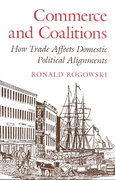Answer the following economics questions.
A life insurance company issues 20-year temporary assurance policies to lives aged 45. The sum assured, which is payable immediately on death, is $400,000 for the first 10 years, and f100,000 thereafter. Level annual premiums are payable in advance for 20 years, or until earlier death. The premium basis is: Mortality: AM92 Ultimate Interest: 4% per annum Expenses: nil. (1) Show that the premium payable is approximately $870.25 per annum. [4] (ii) Find the net premium reserve ten years after the commencement of the policy, immediately before the payment of the eleventh premium, assuming the reserving basis is the same as the premium basis. [4] (iii) Give an explanation of your numerical answer to part (ii). Describe the disadvantages to the insurance company of issuing this policy. [3] (iv) How could the terms of the policy be altered, so as to remove the disadvantages described in part (iii)? [2] [Total 13]A particular area in a town suffers a high burglary rate. A sample of 100 streets is taken, and in each of the sampled streets, a sample of six similar houses is taken. The table below shows the number of sampled houses, which have had burglaries during the last six months. No. of houses burgled x 0 2 3 4 5 6 No. of streets 39 38 18 4 0 0 (i) (a) State any assumptions needed to justify the use of a binomial model for the number of sampled houses per street which have been burgled during the last six months. (b) Derive the maximum likelihood estimator of p. the probability that a house of the type sampled has been burgled during the last six months. (c) Fit the binomial model using your estimate of p, and, without doing a formal test, comment on the fit. (ii) An insurance company works on the basis that the probability of a house being burgled over a six-month period is 0.18. Carry out a test to investigate whether the binomial model with this value of p provides a good fit for the data.An equity pays half-yearly dividends. A dividend of d per share is due in exactly 3 months' time. Subsequent dividends are expected to grow at a compound rate of g per half year forever. (i) If i denotes the annual effective rate of return on the equity, show that P, the price per share, is given by: d(1+1) P = [3] (1+1)" -(1+g) (ii) The current price of a share is $3.60, dividend growth is expected to be 2% per half year and the next dividend payment in 3 months is expected to be 12p. Calculate the expected annual effective rate of return for an investor who purchases the share. [3] [Total 6]









